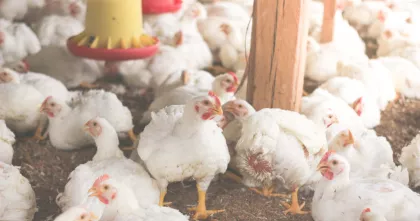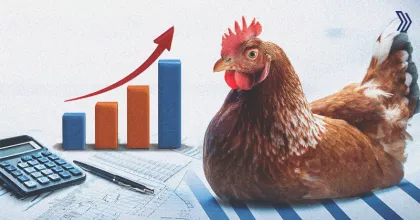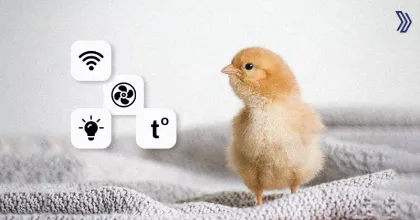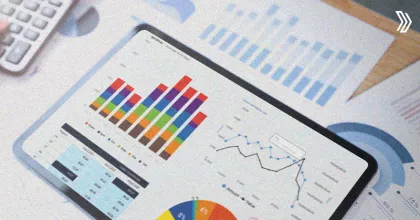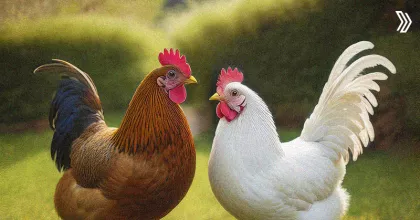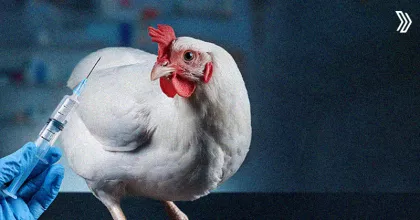Poultry disinfection practice plays a very important role. This practice makes sure that harmful pathogens are removed and the birds remain healthy. In this best practice guide, we will explore the importance of disinfection and the best practices that we should be following for the cleanliness of the poultry houses along with the use of modern management software.
Published 22 Oct 2024
What is Poultry Disinfection? Comprehensive Guide to Keep Your Flock Healthy
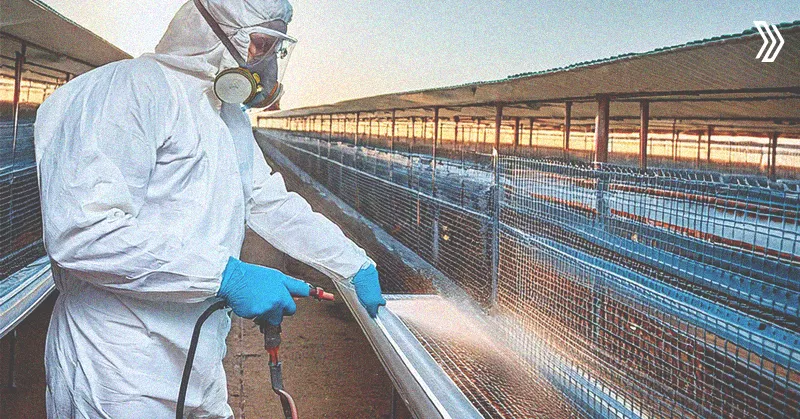
When we talk about poultry farming, the most important thing is the clean and hygienic environment. A clean and hygienic environment is very important for the health and productivity of the flocks.
For assuring this cleanliness, poultry disinfection practice plays a very important role. This practice makes sure that harmful pathogens are removed and the birds remain healthy. In this best practice guide, we will explore the importance of disinfection and the best practices that we should be following for the cleanliness of the poultry houses along with the use of modern management software.
Understanding Poultry Disinfection
First, let's understand what Poultry disinfection is.
Poultry Disinfection eliminates harmful microorganisms, such as bacteria, viruses, and fungi, from poultry facilities. This disinfection is essential as it helps in stopping the spread of diseases, it also ensures the quality of poultry products and good bird health.
This practice of disinfection should be done systematically in all the areas of the poultry house. The poultry house should be sanitized and clean including the walls, the equipment, the floors, and also the air around the house
The Importance of Cleanliness in Poultry Houses
It is often asked why disinfection is needed.
Disinfection is needed because it's not about aesthetics but maintaining a clean and hygienic poultry house helps you improve the overall health and productivity of the flocks. There are some add-on benefits
1. Reduce disease transmission - If the floors are clean and hygienic then there will be fewer flocks getting ill. But if any flocks get ill, then the transmission will stop due to the cleanliness & will not spread to other flocks
2. Enhance feed efficiency - Improving feed efficiency is closely linked to maintaining a clean environment. When the surroundings are clean, flocks tend to consume their feed more effectively, leading to healthier yields.
3. Boost egg production - As maintaining cleanliness directly impacts feed efficiency, this, in turn, contributes to increased egg production and overall profitability
4. Minimize stress on birds - If the environment is clean and hygienic there will be minimum stress on birds and they can roam around and play among themselves easily creating a positive atmosphere and productivity
Regular cleaning and disinfection of chicken coops create a barrier against pathogens and ensure the well-being of your birds.
Key Steps in the Poultry Disinfection Process
While doing the disinfection process there are some important steps that you have to follow:
1. Dry Cleaning: The first step of the disinfection process is dry cleaning, when you do dry cleaning, you remove all the organic matter that includes litter, feathers, or any other waste.
2. Wet Cleaning: After doing the dry cleaning and removing all the organic matter, the next step will be using a high-pressure washer with hot water and detergent to clean off all the poultry house surfaces.
3. Rinsing: After the wet cleaning process, the next step is to rinse thoroughly. This means removing all soap and detergent residues to prevent interference with disinfectants.
4. Drying: After rinsing, the next step is to allow surfaces to dry completely before you go to the next step of applying the disinfectants. It may take some hours.
5. Disinfection: After doing all the cleaning and drying it out, next is to apply the disinfection spray. Apply an appropriate disinfectant using sprayers, foggers, or other suitable methods. Ensure complete coverage of all surfaces.
6. Ventilation: After applying the disinfection, make sure that the ventilation is appropriate as the disinfection can create chemical odors, so proper air circulation is very important for clearing out all the odors.
The Role of Biosecurity in Poultry Disinfection
Biosecurity plays a very important role in poultry disinfection, the main objective of this tech module biosecurity is to keep the spread of disease as low as possible.
To keep the environment safe there are a set of preventive measures that should be applied to avoid the entry and exit of infectious agents that will help in the spread of diseases. Some of the points to consider are the following:
- Restricting visitor access - Restricting unauthorized access is very important when it comes to poultry disinfection as unauthorized access can spread the disease very fast.
Implementing foot baths at entry points - Second, It is important to implement foot baths at entry points so that if external people are coming inside the poultry farm they should first water their feet so that the pathogens are not coming inside with them.
Image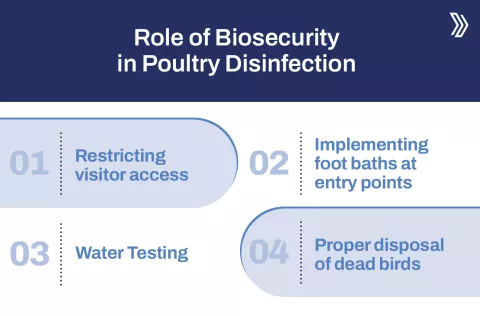
- Water Testing - Water testing is also very important to understand the mineral content and the contamination of bacteria in the water. Make sure that the pollutants and pathogens don't enter the water and that you're following the safety standards
- Proper disposal of dead birds - Whenever a bird goes away, the most important action is to properly dispose of the dead body so that the pathogens or the bacteria are not spread to other birds
By combining thorough disinfection with strict biosecurity measures, you create a robust defense against potential disease outbreaks.
The Importance of Poultry Software for Disinfection
In today's poultry ecosystem, you must implement poultry software for disinfection as it may help you enhance the efficiency and effectiveness of the disinfection protocols in different ways.
Implementing best practices in poultry management is crucial for maintaining optimal flock health and productivity. These practices include regular health monitoring, precise feed management, environmental control, and timely disinfection procedures.
Poultry management software plays an important role in achieving these best practices efficiently. For instance, while regular health checks are essential, software can schedule these checks and maintain detailed health records. Precise feed management requires careful calculation and timing; management software can automate feed calculations based on flock size and age, and trigger alerts for feeding times.
When it comes to disinfection, which we've discussed extensively, Poultry management software can schedule cleaning routines, track inventory of disinfectants, and ensure compliance with disinfection protocols. By leveraging poultry management software, farmers can more easily adhere to best practices, leading to improved flock health, and increased productivity.
Our team is ready to answer your questions and provide custom solutions tailored to the size and needs of your business. Get in touch today!
Poultry disinfection is a critical practice in maintaining the health and productivity of your flock. By understanding the importance of cleanliness in poultry houses and implementing effective disinfection protocols for chicken coops and larger facilities, you can significantly reduce the risk of disease outbreaks and create an optimal environment for your birds to thrive.
Just make sure that disinfection is an ongoing process that requires diligence and attention to detail. By combining thorough cleaning practices, appropriate disinfectants, biosecurity measures, and modern poultry software, you can ensure that your poultry operation remains clean, healthy, and productive. Invest in proper disinfection of poultry facilities today, and reap the rewards of a profitable flock tomorrow.

